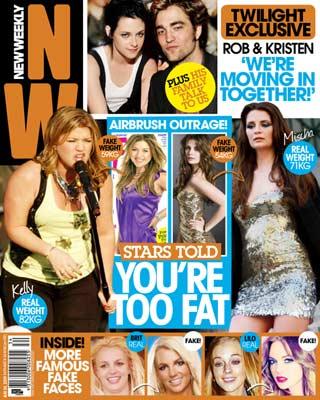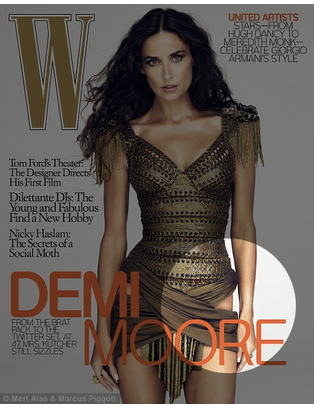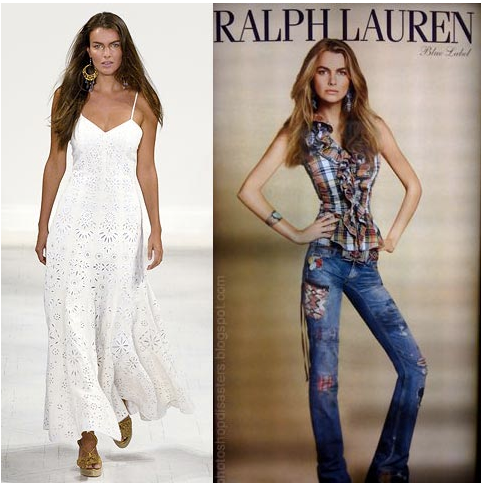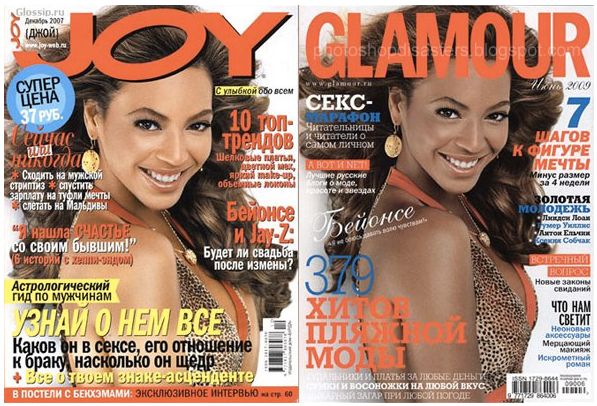 Retouched Beauty and Korean Culture
Retouched Beauty and Korean Culture
Introduction
The visual culture is a philosophical approach that considers the vision the key sensation for learning and accessing the world around us. Visuality refers to the ways, in which the conceptions of the world are developed by certain generations. The studies on the visual culture have mainly focused on the three wide-ranging and complex principles: culture, meaning, and representation. Visual culture as an area of study emphasizes the basic importance of an image in the cultural life. The visual culture and beauty intertwine when it comes to the women and youth. The beauty myth has made the young people and some females think about the beauty. It is been advocated everywhere: in the magazines, advertisings, and on the Internet.
Almost all images of women and even men in the magazines and online publications are photoshopped or retouched; consequently, they delude the young adults. While flipping through them, people do not notice that the photos are not real. This issue is very touchy and requires much debate. The young adults are the most numerous clients of the social media and fashion magazines. They look through specific magazines and online publication with the idea of study the meaning of beauty and gender roles. Today’s world is unique as almost everything is at our fingertips; thus, it is vital for the youth to keep in mind and create own perception of beauty. The paper analyzes the articles that consider the big question mentioned above and studies the impact that it has on the young adults in terms of the Korean culture.
Research topic purpose
In Korea, everybody receives an identification card when he or she turns nineteen years old. I also got my ID last winter; I visited my home and had my ID photo taken at the local photo studio. The photographer asked whether he should make a light retouching if I had a gray hair or under-eye circles on the photo; I gave my permission. Nevertheless, when I got my ID photo, a lot of things looked odd; in fact, the photo bore no resemblance to me. I thought I looked prettier, but still it was not me as my image was seriously retouched. This topic became significant to me when I visited Korea. The Koreans are very competitive in terms of knowledge and skills, but today, they are obsessed with the beauty. When I visited the Korean district, Gangnam, I saw the lines of skyscrapers with numerous signs of the plastic surgery services. That moment, I became aware that what I saw might not be what it looked like. Retouching the photos is similar to the online plastic surgery.
As a teenager, I developed a great interest in the fashion magazines and online photos of celebrities and models. At some point, I thought that those skinny, tall, and flawless girls and boys presented the ideal image of how I had to look like in order to be beautiful. I ate less, worked out more, and wore makeup in order to cover up the impurities on my face in a bid to copy the models and celebrities. I believe there is much more beauty in the natural human being than most people think. No matter whether we are looking at a celebrity, model, or common person, there is so much beauty in different shapes, sizes, and colors.
Analysis
Much advertising of cosmetics and fashion have had a powerful effect on the way we see ourselves. They make us reflect on how we should look like. The women magazines have had a particularly tremendous influence on our body images. Many researchers argue that the teenage girls in Korea rely mainly on the magazines for the standards of beauty and fashion. They highly value any piece of advice and strive to look like the people in the photos. Consequently, the images of both females and males in the magazines send a crucial message to the young generation. These images are very vital for the women as they try to develop own idea of beauty. The editors use Photoshop and other software in order to make the images look beautiful even though they are far from reality.

Figure 1. Photoshop.
The image above is taken from a beauty magazine; it demonstrates two images of the same model and explains what makes the Korean young women want to look like them.
Retouched beauty and Korean culture
Koreans are a specific population of the Asian region; they have a unique way of living and passing their culture from generation to generation. The pin-boy-syndrome reflects a desire for the psychical beauty among the male youth of the Korean contemporary society. In the traditional Korean culture, the concept of beauty focuses on the human mind rather than the body. In the ancient times, the appearance was usually ignored, and a showy effort to trim one’s face or body with the cosmetic surgery was a target of the social contempt. The contemporary concept of beauty, however, conspicuously foregrounds the physical aspects and eliminates the stigma once attached to its obvious pursuit. Today, the Korean workforce is dominated by the young generation; therefore, the younger looking face and body are becoming a national obsession. The beauty plays a significant role in the social stratification and ranking of individuals in the contemporary society. Physical appearance is considered a crucial factor; therefore, beautiful people can attract lots of friends and lovers without significant effort. Moreover, beautiful people enjoy lots of benefits because of their looks. For example, at school, they usually receive higher grades than their more intelligent but less attractive counterparts. Moreover, in the job interviews, they have high chances of being hired than the more competent but less attractive applicants.
In the modern Korean society, the female body is seen through the lens of beauty. Beauty is considered to be a sign of the wealth, strength, and virtue. In the 19th century, it was considered a visual representation of the physical health, which was supposed to be maintained by women through exercise, appropriate lifestyle, and healthy nutrition. The female body was considered defective and controlled by the desires of the flesh and immorality. Theologians of the era asserted that the Biblical original sin was a proof that the female body was a destructor of the male soul. However, the female beauty is a culturally defined concept. Women from Korea have also sought the plastic surgery in order to make their leg bones longer as this peculiarity is considered beautiful in the western cultures. On the contrary, some religious, ethnic, and feminist groups have opposed the idea of an ideal female with slim, blond, sexy, and fit body. Some aspects of beauty such as the inner beauty, which were highly valued in some religious traditions, no longer have an original meaning in the modern beauty. In the peasant society, the beauty of the female body was considered in terms of its fertility and ability to mother children. Different cultures around the world have various consideration of the beauty and attach different values to it while some cultures do not attach any value to it, at all. The mass media has popularized the idea that beauty can be achieved by any woman. The other sectors of the modern society that have spread these standards are mass sports, consumer goods, cosmetic surgery, and beauty pageants. In the modern society, the body aesthetics has become a dominant feature in defining the female self-identity.
The western society praises women with slim, athletic, and Aryan bodies. Some scholars have argued that such representation of the female beauty is somewhat racist. Consequently, the modern standards of the female beauty have stepped out the racial and class boundaries. For example, the women from Korea have sought plastic surgery in order to make their eyelids resemble the one of the westerners and give their female children the longer leg bones. It is an indication of how the western representation of the female body and visual culture has become global and affected females in different parts of the world. Below, there is a cover of a magazine that calls the women to be slim.

Figure 2. Cover page.
The western visual culture and cosmetics have seduced women around the globe through integrating racial, sexual, and social diversity in the once cosmopolitan representation of beauty.
Men and women in the magazines and online publications
Currently, all the celebrity images in the media are digitally modified. This technique has already been used in an advertisement already for a while; therefore, society is generally aware of it. However, most people do not consider how these images influence the young women and the society, in general, in terms of how they perceive and interpret the body images. The digitally modified images influence the societal perception of what a beautiful or ideal female body is. It, in turn, causes enormous pressure on the young women and makes them adapt to the idolized female body. In order to attain a perfect body, these women even opt to starving, which usually results in the eating disorders and poor health.

Figure 3. Adjusted image
I personally have been puzzled by the appearance of the waif-like models in the magazines and advertisement. Today, there are numerous fat-free products in the supermarkets, and they are advertised as the best and most healthy ones. The media and TV people are thin models who look extremely attractive. If the women in magazines and online publications are natural, it is difficult to imagine why the fashion companies use photoshopping. These adjusted images send the wrong messages to the young girls as they develop a negative attitude to their body if they do not look like those models. They have contributed to the Korean young people’s low self-esteem; thus, they contribute to the national diet obsessions. I blame the media of imposing the unnatural standards of beauty in women, during the most vital stages in their development. Below, there is a striking example of a retouched image.

Figure 4. Retouched image.
Since my teenage years, I have paid close attention to the world of fashion and the images that it produces. Being an impressionable young woman, I have not dieted but I have starved myself and punished my body with many exercises in order to look pretty. I even dreamt of having a plastic surgery. Nevertheless, I have realized that many images that we see in the magazines or online publications have been heavily photoshopped. In the media environment, the image retouching is commonly practiced. Below, there is an image of a model that has been retouched.

Figure 5. Retouched model.
Both photos are of the same model; on the first one, there is the natural appearance of a person. The second image was retouched in order to make the woman look thinner and fashionable. It is just an example of the numerous images that are photoshopped; they are making the girls stress themselves while trying to embody the images in reality, even though they are not real.

Figure 6. Retouched photo.
Gender construction
The fashion magazines employ models that conform to a specific definition of the feminine beauty; they prefer thin white females with large eyes and full lips. The scholars have been concerned about the effect that these representations have on the youth. They have suggested that they create the unrealistic expectations about what a real woman should look like. This phenomenon has affected the female identity especially in terms of the body image and sexual attractiveness. The designers can be accused of forcing the magazines to hire the models with jutting bones and with neither breasts nor hips. For adolescents, the untrammeled access to the sexualized images, especially in the period of self-development, makes them adapt a fake identity. Sexuality is inappropriately imposed upon them and makes them sexually objectified.
In Korea, for instance, the beauty is culturally defined. Women, who are not naturally endowed with the traditional beauty, have gone to great lengths in order to conform to the standards, including the surgical modification of their bodies. The gender has been viewed as the repeated adjustment of the body. Beauty is culturally defined; it means that what is valued in one generation or society makes a person invisible in another. The beauty and health are the universally valued categories; they are the most desirable attributes among the women and young male adults. In the Korean society, the western conception of beauty and the media has continued to impact the female body negatively. The Korean borrowed conception of beauty has created pressure on women to look thin and sexy. The women are ready to employ plastic surgery, starvation, dieting, and excessive exercising in order to achieve these standards.
Conclusion
In the today’s society dominated by celebrities, the celebrity culture that is the product of the media surrounds and invades us. The increasing significance of fame, if combined with the beauty standard, impacts the young adults in a negative way. The retouched photos in the magazines and online publications have affected women especially the young adults, who are trying hard to follow the message communicated by the media. Women have been subjected to the diet industry by the magazines that they are reading and the photos in them, which make them anxious about their weight. They are made to believe that the female body is an object of continuous perfection. The beauty standards have not only diluted the self-worth of the young adults but also forced them to conform to the feminine beauty practices. It is in an attempt to embody the ideal images as presented by the magazines and online publications. A woman, who ignores these beauty standards, is vulnerable to becoming an outcast in terms of normality, femininity, and desirability. My objective was to understand how this popular conception has affected the esteem of the Korean women. I have found out that the beauty acts as a promoter of the female confidence, as well as their diffidence. When a girl believes she is beautiful, their confidence increases but those who feel otherwise feed the diffidence. This way of thinking predetermines the girls’ readiness to go to great lengths to be beautiful, including the plastic surgeries and other sacrifices. Today, the Korean society values beauty more than knowledge and skills.






